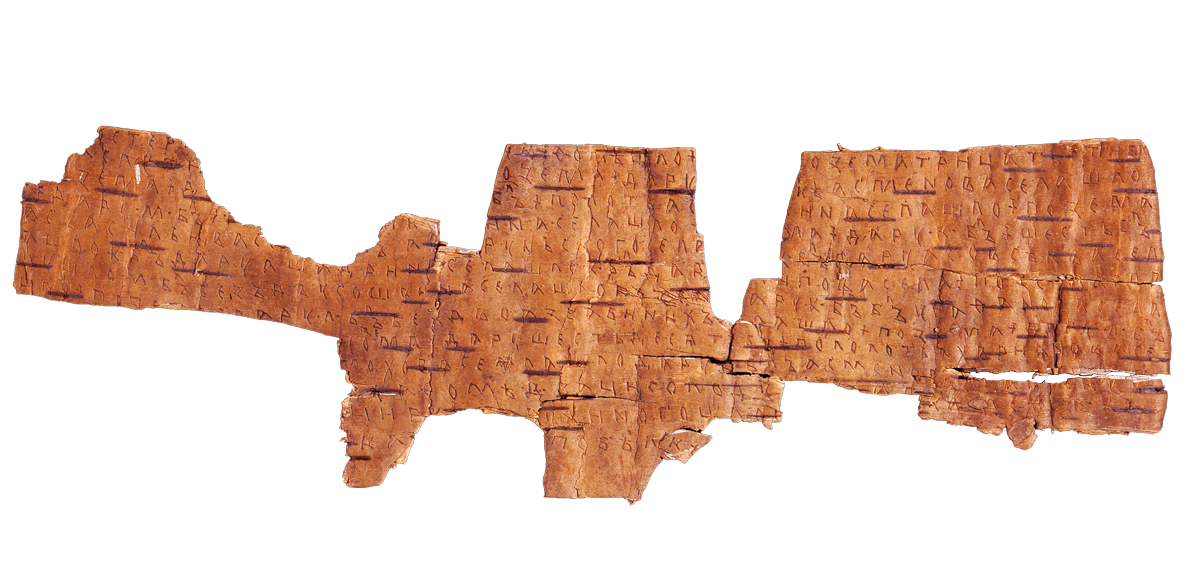The birch bark manuscript №1

A fragment of a letter or a household document such were used by general Novgorodians in the last quarter of the XIII century.
This manuscript is a unique exhibit that reflects everyday life and household activity of citizens of the medieval Novgorod and also the wide literacy among its population. The manuscript contains records of income (“pozem” and “dar”), gained by landowners Foma, Ieva, and probably, Timofey, from several village settlements. The income consisted mostly of monetary (bela) and natural (malt, oat, rye, meat) taxes.
Birch bark manuscripts are letters and notes made on a bark of a birch, ancient manuscripts of Ancient Rus’ of the XI – XV centuries.
The place where birch bark manuscripts of medieval Rus’ were found in the first time was the Great Novgorod where natural settings and the type of soil covering in particular favored their preservation.
The Novgorodian archeological expedition led by A.V. Artsikhovsky in 1930-ies at various times found cut sheets of the birch bark and also styluses – sharpened metal or bone stems known as instruments for writing on wax (however, before the discovery of birch bark manuscripts the version that they were used for writing was not the prevailing and they were usually described as rivets, hairpins or “unknown objects”).
On July 26 in 1951 at the Nerevsky excavation site the birch bark №1 was found: it contained the list of feudal duties ( “pozem” and “dar”) in favor of three landowners: Foma, Ieva and the third, who probably was called Timofey. These birch bark manuscripts were found by the Novgorodian citizen Nina Aculova, who came to the excavation site to earn money during her maternity leave.
The discovery showed that while writing manuscripts inks were almost never used (on excavations were found only three of such manuscripts among over a thousand); a text was usually scribed on the bark and was easily read.
Most of birch barks are private letters that have some business issue (collection of debt, trade, household instructions). To this category are very close the dept lists (that could serve not only as notes for oneself, but also as instructions “to gain from this person this much”) and collective humble petitions from peasants to the feudal lord.
Also are known drafts of official acts on the birch bark: devises, purchases, receipts, court records, etc.
Comparably rare, but interesting are following types of birch bark manuscripts: church texts (prayers, lists of memory, orders for icons, exhortations), literature and folklore works (plots, school jokes, puzzles, instructions on the household), records of educational sense (alphabet, letter-pairs, school exercises, children’s drawings and scrawls).
Birch bark manuscripts usually are maximally brief, pragmatic and contain only the most important information; facts known by the author and the addressee are not mentioned in them.
Personal and day life character of may birch bark manuscripts (for example, love letters of young men not of noble birth and household prescriptions-instructions from wife to husband) witness the high level of spreading of literacy of the population.
To date birch bark manuscripts are discovered in Smolensk, Staraya Russa, Pskov, Moscow, Staraya Ryazan and other old Russian cities. Their number is over 1000 findings.
